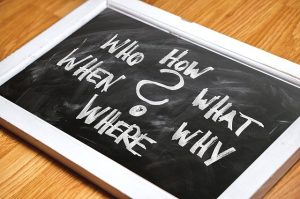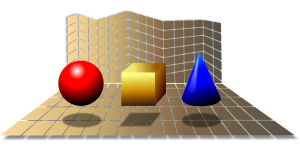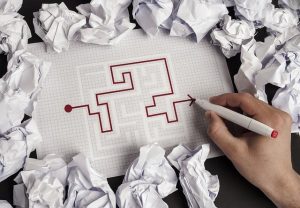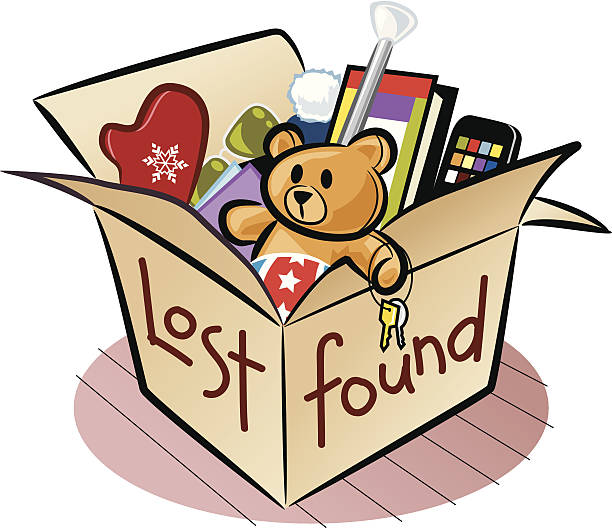Loss, Hope and Growth
The fact that we have recently been experiencing particularly difficult, confusing, strange and uncertain times is, of course, old news. Needless to say that COVID-19 has added an extra pinch of turbulence to our already busy lives. An image emerged in my mind that projected a world that seemed to have (almost) stopped due to the pandemic. This situation made me feel the relevance to reflect on Loss, Hope and Growth. The uncertainty that accompanies this situation, may evoke on us a deep sense of loss for what we lose, hope for what may come and growth as a result of this experience. The possible implications, depending on the 'stage of life' we are in and how 'hard' this situation 'hits' each of us, is worth to explore
Life, as we knew it, was somewhat frozen in time and, if not completely, at least slowed down and diverted due to unexpected changes that certainly evoked different levels of uncertainty, anxiety, fear and anger, among others.
In this regard, on a dark and cloudy day, as I watched the pouring rain from my office window, I mentally reviewed the impact that current circumstances still continue to have on us and how they have affected the way we interact with our inner and outer worlds.
To the Point....
Funnily enough, this made me think back to my school days when I was in primary school (feels like a century ago... ...). I remember the school had a room called 'Lost and Found'. The room was a place where students could go and retrieve lost items that might have been found by others. The room was filled with countless things, recent additions and others long forgotten. One would go there and 'dive' into this strange looking and smelling room in the hope of finding whatever it was we were looking for. At that stage of our lives this seemed like an adventure, obviously shared with your best friend.
From time to time I find myself thinking about the times when we feel lost, lacking a sense of direction, and questioning everything. Has something similar ever happened to you during confinement, or perhaps are you still feeling like this right now?
I would like to invite you to take a short internal journey to see if you can, or want, to find your own ‘lost and found’ room and start looking at what there is in it. Perhaps something recent, something that has been dragged around for some time now, things that are somehow buried deep inside and are difficult to find and/or those that, for whatever reason, were lost and that you had not wanted to find until today. This process of introspection will undoubtedly evoke some level of anxiety, expectation, of hope and of loss, all of which are natural occurrences. The 'self’ is getting ready to step out of its comfort zone to explore the unknown in search of 'change', or 'evolution', or 'growth', or 'development'.
So, what is it that we may have lost and what can be found? How can we find growth out of this experience?
The 'Loss'
What we give up, let go of, or sometimes even what is taken from us in the process, is experienced as a loss.

Once we accept the fact that almost everything and every situation is transitory, mostly involving a loss, and allow ourselves to view our situation with an open mind, we can let the process of change flow, thus helping us to move forward. This is the kind of dynamic that helps us to have a better willingness to see things or get to our feelings in different ways.
Within this process of 'transformation', we leave behind those thoughts, feelings and behaviours that hurt us and can sometimes become dysfunctional. In other words, we become an active part of the renewal process. Certainly, different types of loss have different impacts on each of us. However, for the purposes of this article, I will not delve into all of them.
The 'Found' (hope)
Marcus Aurelius' view of the paradox of life is that, in times of crisis when we are finally faced with inevitable and even necessary situations such as death, grief, conflict or sadness, they make us 'wake up' to force us to be more aware and open to life. For example, have you ever lost a loved one and, in processing the sad experience, had existential thoughts about mortality and the fragility of life? When we are in this 'state of mind' it becomes easier to reflect on our own life in a different way. It is as if we have woken up and relate to our reality in a more connected way.
Life is a dynamic flow that never stops. It has an underlying current of hope and growth that motivates us to keep going regardless of how difficult and hard things can become. Hope brings a dimension of strength to our aspirations, encouraging us to take the necessary steps to make them happen. Avoiding engaging in this experience leads us to a state of stagnation. In her book The Ethics of Ambiguity, Simone de Beauvoir refers to the latter saying that '...life is occupied in both perpetuating and surpassing itself and that, if all it does is to maintain itself, then living is only not dying…’.
Dimensions of existence
Let's go back to our 'lost and found' room. The content of this ‘room’ will depend on our life experiences. There is so much there that coping with all of it can become confusing and overwhelming unless we can manage to bring some order in a more organized and structured fashion. I thought that, in order to understand better this transformative process, it could be helpful to briefly reflect on, and eventually consider Dr. Emmy Van Deurzen's views on the physical, social, psychological, and spiritual dimensions of existence. The author states that the four of them struggle with a constant conflict between two forces, i.e. what we desire versus what we fear. The ability to reconcile these two bring a sense of awareness, acceptance, hope and growth.
You are most likely asking yourself ”how?”. The short answer is to work with each of these dimensions as a framework through which we can view, organize, and experience the contents of our own lost and found room. At this point, I would like you to be very clear in that the idea here is not to compartmentalize the different dimensions but rather to visualize them as separate, though all the while keeping in mind that they are connected as these are constantly affecting each other.
The Physical Dimension
This refers to the relationship with the world around us, from the concrete surroundings such as objects and material possessions to the natural ones, such as ours and others’ bodies, their needs, their fragility, their vulnerability, and mortality.

The struggle that this dimension presents us with, is the tension between the desire to control or dominate versus the acceptance of the limitations of natural boundaries, for example some types of illnesses and the ailments of old age, among others. Regardless of the fact that we aim at living a long and healthy life, the realization that our situation could change almost overnight and without warning may evoke fear. On the other hand, the acceptance of our limitations may help releasing the tension attached to a particular situation.
The Social Dimension
This dimension refers to the way we interact with the "public world". In other words, it relates to how we interact with others, how we relate and respond to social expectations, the cultural environment in which we are immersed, the class and race to which we belong.
The struggle this dimension presents is based on the strong need we have to be accepted and to belong versus the fear of rejection and isolation. Today, technology and social media have reshaped the social dimension as it has ‘metamorphosed’ social interaction from a physical/human connection to a digital/virtual one. The feeling of acceptance and belonging is measured by the number of 'likes' and the number of ‘followers'. Unfortunately, much that we try to deny it, these measures only create an illusion, an ephemeral sense of success, fame and/or power which, through a simple ‘click’ can, on a worst-case scenario, also trigger feelings of failure and aloneness.
The Psychological Dimension
Here we talk about the way we relate to ourselves and our inner world. It takes into consideration opinions about our character, our past experiences and the projections we have in relation to our future possibilities.
The struggle presented by this dimension is often expressed in terms of the tension between our personal strengths and weaknesses with the search for a sense of self and a sense of identity. The third element of the 'conflict' that arises is called the reality (not surprisingly, I suppose), which confronts us with situations that may differ from what we think we are as seen from our own perspective. This has the potential to lead us into a state of confusion or disintegration.
The Spiritual Dimension
Finally, the spiritual dimension refers to the relationship we establish with something bigger than ourselves, with the unknown, with an ideology or a philosophical perspective. How we connect with something that is beyond our daily routine and life.
It is in this dimension that we find and/or create a sense of meaning and purpose. There are different ways to attain this like, for example, through religion, world views, secular perspectives or even in our own personal way based on our thoughts and beliefs. We are in constant search for something that really matters, that will inspire us to live a more fulfilling life. We want to self-transcend, to contribute to humankind with something valuable.
The struggles this dimension presents are often related to the tension between purpose and absurdity, hope and despair.
The way forward
Picture yourself in your own lost and found room. Breath and observe. Take your time to check what is there and, if there is something, what do you want to do with it. If and when you identify something of ‘interest’ that needs reviewing and/or that requires to be dealt with and/or rebuilding, then the best course of action would be to associate it with one of the above-mentioned dimensions, place it in the one that it belongs to, and start the process of finding ways to reorganize the feelings in a positive manner and with a positive attitude.

As part of our transformative journey and personal growth, it is up to us to decide what we keep and what we let go of, what we recycle or transform. Making use of these dimensions will certainly help us to see and understand which of them we need to pay attention to, which areas we need to focus on and which ones we need to work on.
Keeping a balance is always important because this provides a sense of harmony. If we let ourselves get absorbed exclusively in one of the dimensions and neglect the others, then we run the risk of being thrown out of balance and ‘suffer’ the resultant disturbances.
As in every journey we take in life, there are ups and downs, winding roads and obstacles to deal with. However, it is only by facing both positive and negative aspects and reconciling the idea that one does not exist without the other, that we can open a space that generates the energy to move us forward, inspire us to live in a more creative manner and, with tenacity, perhaps live a lesser stressful existence.
If you are facing challenges in enhancing and navigating through relationships, consider contact me for individual therapy. Together, we can develop the necessary skills to optimize your relationship issues.

